Underpinned by the Mpumalanga Economic Reconstruction and Recovery Plan, the province will invest nearly R4.3-billion into its strategic infrastructure development initiatives that target growth. Premier Refilwe Mtshweni-Tsipane reported during her SOPA that her government has completed 102 projects in the categories of buildings and road furniture.
These projects consist of 88 educational facilities, three health facilities, two social development facilities and a single library. Four new schools were also completed, with impressive progress made in new and the replacement of five more schools undergoing construction and refurbishment. Again, designs are being finalised for two additional schools.
The province’s infrastructure drive will also see the health sector being bolstered with new facilities. “The planning and design process for the Linah Malatjie Tertiary Hospital in Emalahleni has progressed, with authorisation in terms of Environmental Impact Studies granted, town planning processes completed, preliminary and concept designs completed, and detailed design being on schedule with construction set to commence during the 2023/24 financial year,” stated the premier of Mpumalanga.
With regards to road assets, massive construction is being rolled out across the province. The Tekwane South Bridge on the D2296, made news headlines in February 2021 after it collapsed due to the heavy rainfall as a result of Tropical Storm Eloise. “I am happy to report that we have completed repairs and the bridge is operational,” Mtshweni-Tsipane stated, adding that the Karino Interchange project on the N4, which provides a link between Mbombela, Kanyamazane, N4 and access to the Kruger Mpumalanga International Airport has also been completed and is in use.
“In an effort to improve the provincial road network, we have prioritised several strategic roads. One of the roads that have been prioritised is road P216/1 from Secunda to Embalenhle, which we will be constructed in the 2023/2024 financial year,” added the premier.
Additionally, Mpumalanga’s integrated human settlements programme has registered significant victories in housing, sanitation and related areas.
Premier Mtshweni-Tsipane indicated that the province has delivered 2 453 housing units through the Rural Housing Programme as well as the Military Veterans Housing Programme. Moreover, the servicing of 600 sites at KaMhlushwa has been completed to date with more planned for delivery in the 4th quarter and in the 2023/24 financial year. Again, in Rondebosch, 220 sites are being service and completion is targeted for next month.
Although the province has issued 1 616 title deeds to their rightful owners, the administration acknowledged that there were still challenges with the system. “One of the challenges we face,” explained Mtshweni-Tsipane, “is that most houses requiring title deeds are in rural areas, unproclaimed townships and in state-owned land, which causes delays with the registration and issuing of title deeds.”
To address bulk water infrastructure challenges, a Provincial Water Master Plan has already been developed and shall soon be entering its final stages for approval as a blueprint to guide water infrastructure development in the Province. “Significant progress has been made in addressing water challenges in the Thembisile Hani and Dr JS Moroka Local Municipalities through the Loskop dam water project. The project has since been divided into five work packages, which include reservoirs, bulk pipelines, and water treatments plants,” the premier stated. The long awaited Mountain View Regional Dam in Ehlanzeni District will be completed by the 2027/2028 financial year.
Meanwhile, the province’s Expanded Public Works Programme (EPWP) has been energised by this infrastructure drive, continuing to play a crucial role in mitigating the challenges of poverty, lack of skills and unemployment.
“In the current financial year, EPWP has created 24 205 work opportunities through the use of labour-intensive methods. The majority of beneficiaries in this regard are youth, women and people with disabilities,” stated Mtshweni-Tsipane. She added that seven child care facilities and a community hall, as well as seven social amenities facilities are almost complete.




